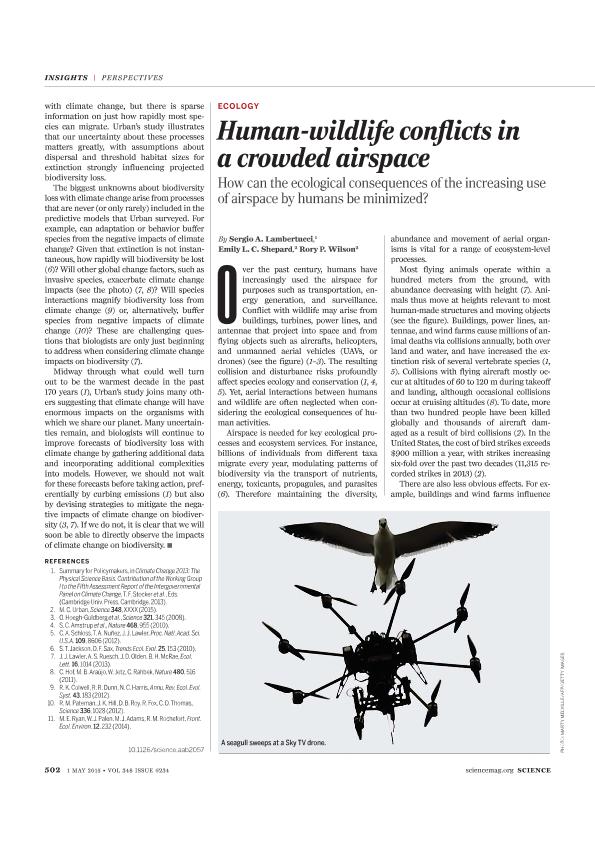Artículo
Human-wildlife conflicts in a crowded airspace: how can the ecological consequences of the increasing use of airspace by humans be minimized?
Fecha de publicación:
01/05/2015
Editorial:
American Association For The Advancement Of Science
Revista:
Science
ISSN:
0036-8075
e-ISSN:
1095-9203
Idioma:
Inglés
Tipo de recurso:
Artículo publicado
Clasificación temática:
Resumen
Over the past century, humans have increasingly used the airspace for purposes such as transportation, energy generation, and surveillance. Conflict with wildlife may arise from buildings, turbines, power lines, and antennae that project into space and from flying objects such as aircrafts, helicopters, and unmanned aerial vehicles (UAVs, or drones) (see the figure) (1–3). The resulting collision and disturbance risks profoundly affect species ecology and conservation (1, 4, 5). Yet, aerial interactions between humans and wildlife are often neglected when considering the ecological consequences of human activities.
Palabras clave:
Airspace
,
Conservation
,
Flying Species
,
Human-Wildlife Conflict
Archivos asociados
Licencia
Identificadores
Colecciones
Articulos(INIBIOMA)
Articulos de INST. DE INVEST.EN BIODIVERSIDAD Y MEDIOAMBIENTE
Articulos de INST. DE INVEST.EN BIODIVERSIDAD Y MEDIOAMBIENTE
Citación
Lambertucci, Sergio Agustin; Shepard, Emily L. C.; Wilson, Rory P.; Human-wildlife conflicts in a crowded airspace: how can the ecological consequences of the increasing use of airspace by humans be minimized?; American Association For The Advancement Of Science; Science; 348; 6234; 1-5-2015; 502-504
Compartir
Altmétricas




